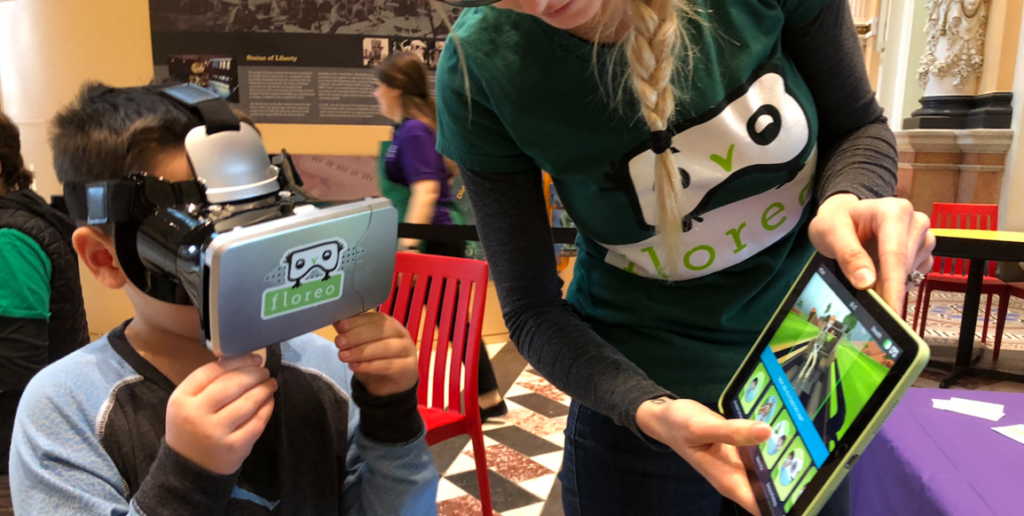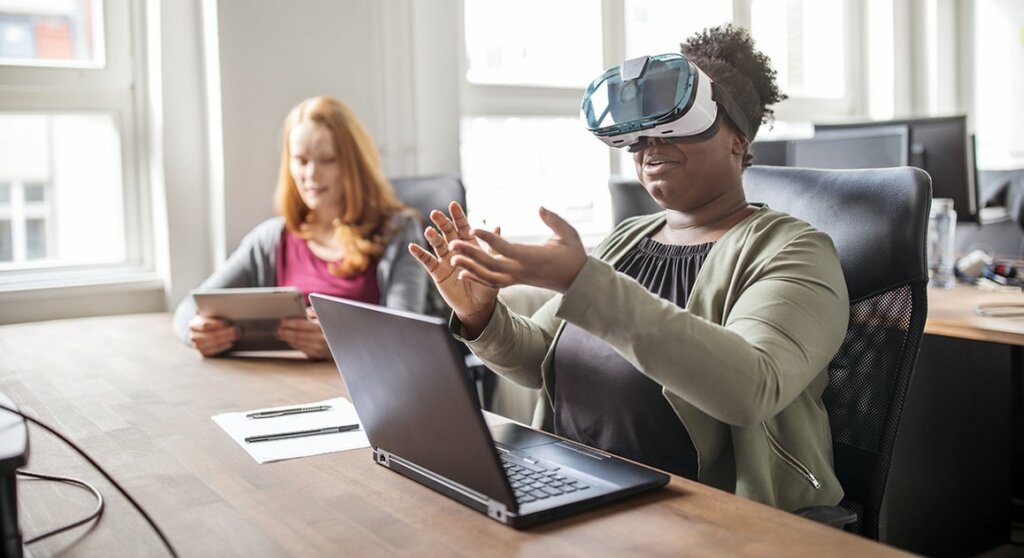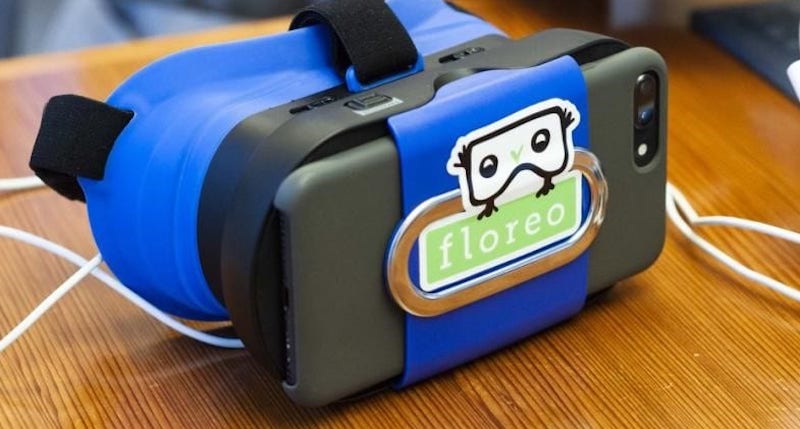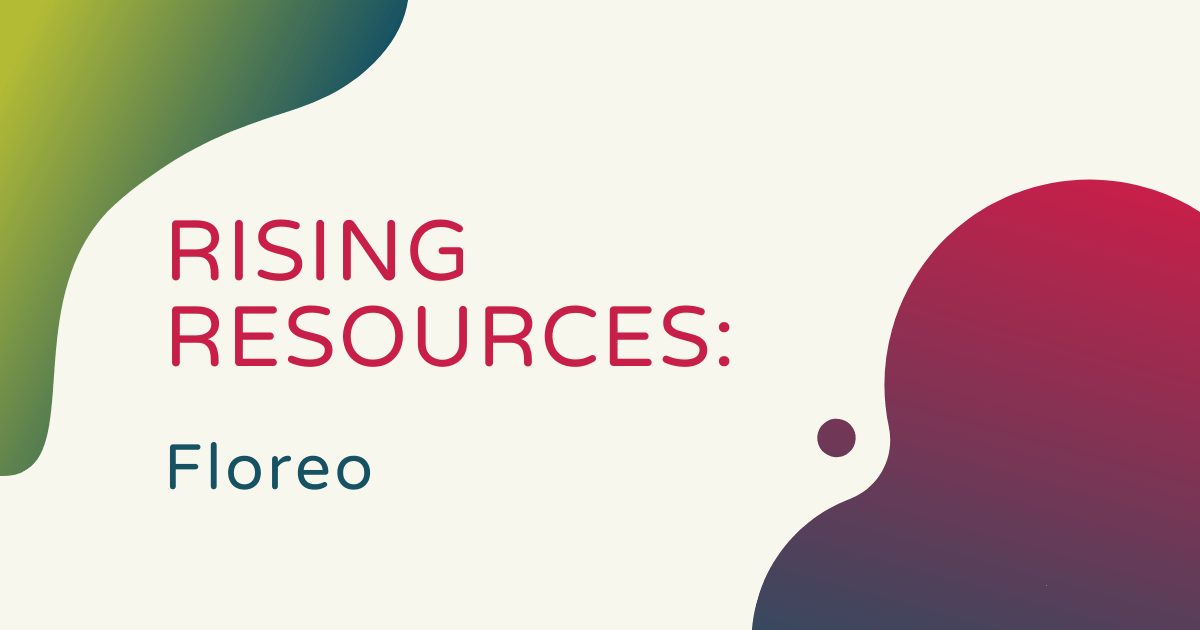It's Autism Acceptance Month, so we're exploring Floreo, a super immersive virtual reality tool designed specifically for autistic and neurodiverse students. While Floreo is for anyone who wants to practice social or life skills in a safe and virtual environment, it is particularly useful with special education students, like those with Autism Spectrum Disorder. Many autistic people of all ages can struggle with navigating social interactions, overstimulating environments, and unexpected events. With Floreo's science-based lessons and VR compatibility, children can experience these situations through educational simulations, preparing them to encounter similar experiences in real life.
The Floreo team has partnered with experts throughout the ASD field, including autistic self-advocates, to develop fun lessons for students with learning differences. Floreo's inclusion of members of the autistic community on their advisory team is another reason we love this platform. When developing content for a marginalized community, it's essential to listen to voices from that community, as they have done.
Educators, parents, and professionals use Floreo in schools, in homes, and even in therapy settings. The experience—thanks to the accompanying VR headsets—is immersive for students, and more importantly, it’s repeatable. This allows students to generate valuable context throughout these experiences and revisit material until they master it. Floreo empowers neurodivergent individuals to face challenging situations and train for real scenarios.
Floreo for the classroom and beyond.
A student using the Floreo platform would likely do so with help from a parent, teacher, or therapist. Having a coach work with them provides children with guidance and gives adults a firsthand look at their progress. In addition to its uses in therapy settings, Floreo also allows parents to engage children at home. Since the users mainly access Floreo through the app, it's easy to adapt to different locations. Using Floreo at home can preemptively help kids who get anxious going places like doctor’s offices, school, or therapy centers.

The lessons within the Floreo platform help children cultivate real-world skills, making it easier to navigate the school environment, using public transportation, or visiting grocery stores. By engaging in the lessons, children learn strategies for handling specific occurrences. This could include managing both planned and unplanned events, handling sensory overstimulation, and regulating all their emotions. Practicing for these situations with Floreo can make the world more accessible to neurodivergent individuals.
Floreo as one of the best VR apps for autism.
Floreo allows students to rehearse common social situations without the need to be physically present. Its Street Crossing and School Hallway experiences, for example, harness the vivid power of virtual reality for simulating what these situations would be like in real life. In that school hallway environment, students have to respond to a friendly peer, an unfriendly peer, and a neutral peer, while a coach observes their reaction in each situation. Another lesson, Hallway Small Talk, involves a peer approaching the student in the hallway of the school. The learner interprets what their peer is communicating and responds accordingly.

Beyond lessons on talking in class or the hall, Floreo also includes situations that adults are more likely to encounter. Learners can practice, for example, talking to police, going through airport security, or working in customer service. Floreo also offers calming experiences learners can utilize when overwhelmed. They might try watching a train pass, finding fish in an aquarium, listening to positive affirmations, doing yoga, and more. With these practical examples, Floreo's scientifically-backed lessons allow all neurodivergent people to prepare for encounters without fear.
Adding VR technology to special education lessons.
When preparing to use Floreo in a lesson, a teacher or coach can pair student devices with the Floreo app (available for iOS), then simply place their phone inside a compatible VR headset the learner will wear. The coaches should also have a device of their own to use when guiding the lessons. For those who may have difficulty getting equipment, rental options are available, and you can bundle them into subscription costs. This makes the process more accessible, especially for families or smaller groups.
During each Floreo lesson, the coach can provide further instruction and feedback, encouraging the learner throughout this experience. They can also see student progress and their view of the lessons, helping them keep track of the student's perspective. The learner doesn't have to do anything during their lessons—just focus on practicing the situations.

Although the coach directs the lesson, it is important to maintain student agency as well. With a library of nearly 200 lessons, Floreo has plenty of options to choose from. Asking the student to choose a lesson or experience—or even selecting one together—is a fantastic way to include them in this process. Asking the learner's preference helps maintain motivation and increases agency, which is important for neurodivergent people who may communicate differently.
Autistic self-advocacy and Floreo.
Though Floreo is designed for neurodiverse people, the app is controversial among some autistic self-advocates. Some have concerns that Floreo could be used for applied behavior analysis (ABA) therapy, which receives criticism from much of the autistic community. Many individuals with ASD argue that ABA treats autistic traits as flaws to be overcome and not as innate characteristics. Rather than training autistic people to act neurotypical, they say, society should defer to autistic people about what is best for them. If users implement Floreo to quell natural ASD behaviors, this may be problematic to autistic self-advocates.
On the other hand, Floreo can be helpful for autistic individuals because it emphasizes practicing unfamiliar situations. The opportunity to rehearse a conversation or any new experience in virtual reality is unique and potentially very beneficial. Many of Floreo's VR experiences, like Differentiate Banter from Bullying or Cross the Street by Yourself, teach students essential social and physical safety lessons. And, Floreo's emotional regulation tools center on the autistic experience by providing techniques for ameliorating overstimulation.
Like many technologies, such as the controversial AI ChatGPT, virtual reality could be used for harm or for great good. For educators interested in Floreo, it is crucial to keep in mind potential pitfalls when using this technology and to allow autistic students to keep their agency and advocate for themselves. That way, the neurodiverse students can benefit from these helpful lessons on Floreo's platform. Check out the Autistic Self Advocacy Network's website to learn how to prioritize autistic voices, then head to Floreo's library to browse their vast array of immersive lessons.
Beyond these resources, we also encourage you to explore our Special Education list on Twitter for more content and insights from SpEd professionals. Be sure to follow us on Twitter and Instagram as well.



